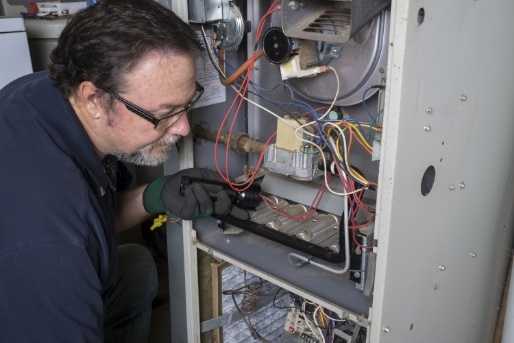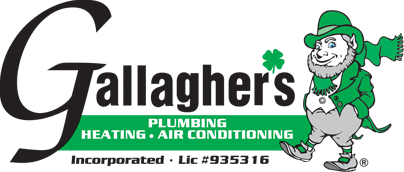
You likely notice when your furnace kicks on during the day. The sound is often amplified through the metal ductwork, notifying you that a heating cycle has started. Furnaces also tend to make a range of sounds when something goes wrong. In this blog, we shed light on some common heating system noises.
Understanding the different sounds your furnace makes is essential to make sure that your furnace is running safely and properly.
WHISTLING
Whistling is a fairly common sound emitted by furnaces and can be subtle or incredibly loud. If you hear whistling, first try to identify the source of the noise. A whistling sound that’s just coming from one room may be because of a closed air vent.
Occasionally, after having a new furnace installed, the amount of air being pushed through your ductwork can increase. This isn’t often initially a problem, but it can create gaps in your ducts and vents that leak air.
If the sound is coming from your furnace itself, there are several possible reasons. Most likely, there’s an issue with airflow or a problem with the blower. Your heating system needs fresh air that can then be heated and pushed around the home.
When your air filter is clogged, it impedes the system’s flow of air. This can cause a shrill whistling sound as air is forced through. Leaving a dirty HVAC filter in place for too long also increases your risk of overheating and system shutdowns.
In very few cases, you may hear whistling if the gas valve has malfunctioned. It could be a sign that high-pressure gas is escaping into your breathing air. This compromises the safety of your HVAC system and your household’s health. If you also smell rotten eggs around the furnace, immediately call us for HVAC repairs.
LOUD BUZZING OR HUMMING
Even if your furnace is new, it still creates a finite amount of background noise. Humming or buzzing sounds can occur when a furnace first kicks on or during the regular heating cycle. If there’s an issue with the motor itself, the sound will persist the entire time your furnace is on.
It’s also possible some of the motor’s electrical components have become worn out or compromised. In this situation, the buzzing or humming will stop after startup. The sound is loudest in the beginning due to the increased need for power. This drops once it’s running, lowering the overall strain on the motor and its associated parts.
You should never attempt to change out any of the electrical parts in your furnace. Even if you cut the power to the system, you can still cause damage to surrounding components and motors. Mishandling wires and other electrical parts can lead to short-circuiting as well as shocking or even electrocution.
CLICKING
Never ignore any loud clicking sounds coming from inside the furnace cabinet. This is usually a sign that the heat exchanger has cracked and is leaking carbon monoxide. Your system’s heat exchanger transfers heat from the flue gases into the air that’s distributed in your home. After this cycle, the heated gases are released safely outside.
If you believe your furnace’s heat exchanger is damaged, you need to act immediately. Turn off the gas supply and evacuate the home until a professional arrives.
BOOMING OR BANGING
Banging and booming sounds are often the easiest of the common heating system noises to identify. These can originate from your system itself or the nearby ducts. Your ductwork may not be the right size for your new furnace or your home’s heating needs. Clogged filters can also create unsafe amounts of air pressure in the system, which makes the ducts expand and contract loudly.
Another, potentially dangerous cause for this noise is delayed gas ignition. This happens when there’s either too much gas or too much air in your furnace. Dirty, compromised or malfunctioning components can also delay this process.
This form of banging is dangerous because it’s essentially the sound of small explosions. Your furnace isn’t able to safely ignite the gas as normal. Instead, gas is allowed to build up until it finally ignites and burns up quickly. This is similar to when you attempt to light a barbeque or grill after releasing the propane.
These delayed gas ignitions can directly damage your heat exchanger, which costs a lot to replace. In many situations, a professional technician will recommend replacing the whole system rather than just the heat exchanger. It’s also dangerous because gas flow issues put your family at a higher risk of carbon monoxide poisoning. Routine maintenance ensures all of the components inside your furnace are clean, efficient, and safe to use.
GURGLING OR DRIPPING
High-efficiency furnaces create regular condensation during the heating process that is then drained via the condensate line. When there’s a clog or issue with this line, you may hear gurgling, sloshing, dropping, and other water-based noises. You can often correct these issues easily. Simply flush out the condensate line and check the drain pan for any strange growth or leaks.
If you hear water moving in your furnace or ductwork, there could be a more serious moisture issue developing. Any unidentified sounds of water should be investigated immediately before they lead to problems like mold growth, pests, and structural damage.
IMPORTANCE OF BIANNUAL MAINTENANCE
You can prevent most of these common heating system noises by scheduling maintenance with our experienced team. Your heating system benefits the most from service in the fall and spring. Routine care prevents vital components from becoming worn out and dirty with time. As your furnace ages, it’s at higher risk of struggling with cracked fan belts, gas leaks, and malfunctioning sensors.
During a preventative maintenance appointment, one of our trained technicians will examine your furnace from top to bottom. They’ll sweep out any accumulated debris and make sure all bolts are tightened and belts are lubricated. Our experienced industry experts will also identify any early warning signs that will save you repair costs in the future. HVAC maintenance stops problems in their tracks before they can impact your household’s safety.
TRUSTED HVAC AND PLUMBING COMPANY
Since 1989, Gallagher’s Plumbing, Heating and Air Conditioning has offered exceptional heating, air and plumbing services. We proudly serve Sacramento, CA, and the surrounding areas.


 uys
uys